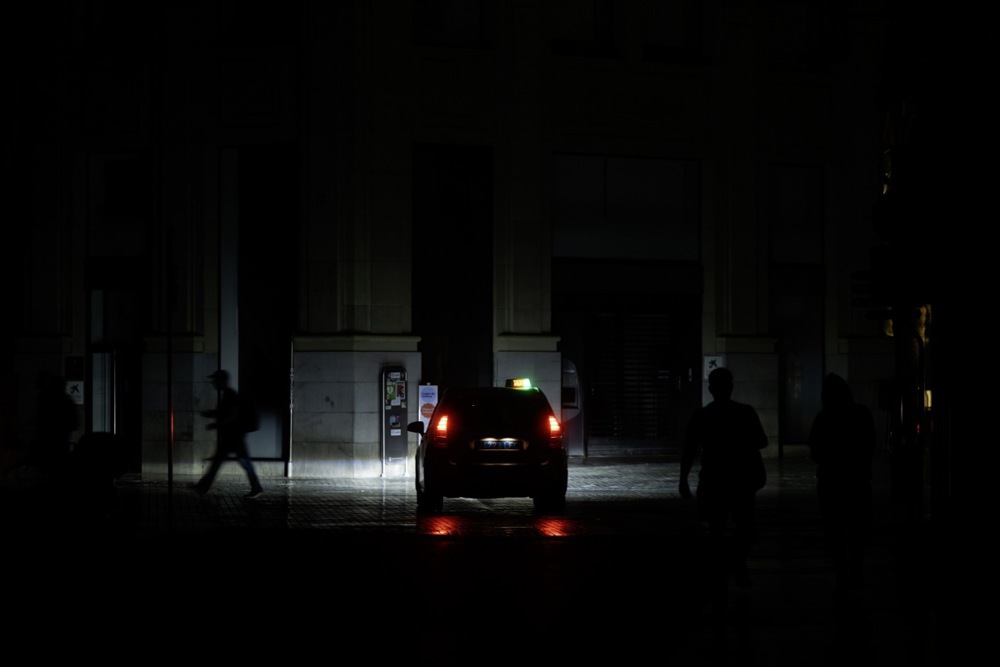Spain was warned well before the outage across the Iberian Peninsula that it risked severe energy blackouts due to its reliance on renewable energy, it has been disclosed.
Although the exact cause of the blackout on April 28 has yet to be officially confirmed, many experts highlighted potential vulnerabilities in green energy systems — a concern that some argued was overlooked by a progressive Spanish government heavily invested in the “green” energy transition.
Numerous experts said they had been warning for years that the current situation in the country’s energy sector could lead to exactly the scenario that unfolded a couple of days ago.
Yet in response to discussions about the warning, Red Eléctrica — chaired by former Socialist minister Beatriz Corredor — stated on social media on April 9 that there was no threat of a blackout and that the electricity supply was guaranteed.
In 2020, for example, internal studies by Spanish grid operator Red Eléctrica warned it was “essential” to increase storage capacity or interconnections to “ensure the operability” of the grid in the green transition, newspaper El Mundo reported.
Red Eléctrica technicians noted that the widespread integration of renewables would have a greater impact on the stability of the grid in Spain than in other European countries due to its limited interconnection capacity.
They suggested a series of “essential” measures to avoid “inadmissible” frequency mismatches such as happened on April 28 and caused the international blackout.
While Madrid pushed for evermore renewable energy, many essential measures suggested by the technicians to avoid such outages were, they said, unrolled too slowly or not at all, creating a lack of inertia (the ability to maintain a steady frequency) in the system, which most likely led to the recent mega blackout.
After the outage, Red Eléctrica said it suspected a sudden disconnection of generation, apparently photovoltaic, triggered a drop in energy that cascaded into the total shutdown
While Spain and Portugal are slowly recovering from the electricity blackout that put both countries to a standstill, experts have been pointing out that renewable energy might be the main cause of the problem. https://t.co/NdHa9tBpeB
— Brussels Signal (@brusselssignal) April 29, 2025
More recently, other experts had also warned of what could happen, again putting the focus on the growing reliance on renewable energy.
In January 2025, Spain’s National Commission on Markets and Competition (CNMC) noted in a report on the control of voltage in the system that tensions within the transmission network “have reached maximum values close to the thresholds allowed by the regulations, even exceeding them at specific times”.
They predicted that could increase in the short and medium term.
Redeia, the parent company of the system operator Red Eléctrica, acknowledged to investors in February of the “short-term risk” of “generation disconnections due to the high penetration of renewables”.
According to Redeia, this greater instability of the grid could impact both the electricity supply and the company’s reputation.
It warned that continuing to close conventional generation plants — such as coal, natural gas and nuclear facilities — as a result of regulatory decisions, “implies a reduction in the firm power and balancing capacities of the electricity system, as well as its strength and inertia”.
On March 11, Fernando Ley Llano, an adviser to the energy oil and gas sector, appeared before the Industry Committee of the Spanish Congress to give his opinion on the State’s planned energy policies. He called them “a bill for Spanish industry but without taking into account Spanish industry”.
“We haven’t had the power out in the last 40 or 30 years but it’s not ready. I don’t say it, it’s the gentlemen who generate electricity in this country [the grid operator], which is not prepared for how they want to make this transformation.
“What is necessary? Of course it is necessary but not in this way,” Ley Llano said.
He pointed out that Red Eléctrica technicians had never attended the sector’s major events.
? Un ingeniero avisó en marzo en el Congreso de que Red Eléctrica era una bomba de relojería
Afirmó que la operadora no estaba «preparada» para la transición energética iniciada por el Gobierno
? Sigue leyendo en: https://t.co/MWdP6X0M5x
✍ @anai_martin pic.twitter.com/lci2BHOq49— El Debate (@eldebate_com) April 30, 2025
The European Network of Transmission System Operators for Electricity (ENTSO-E) had also previously warned that Spain could face a heightened risk of blackouts between 2026 and 2028, coinciding with the planned closure of the Almaraz nuclear power plant.
This was based on a report from the international accounting firm EY, published on February 26, 2025.
Spain’s progressive government has continued to dismiss concerns about the risks of over-reliance on renewables, even after the latest incident, instead aggressively shifting blame elsewhere.
While operators and experts were quick to bury claims of possible cyberattacks, Spanish Prime Minister Pedro Sánchez refused to rule them out.
“We still do not have conclusive information on the reasons for this cut. We do not rule out any hypothesis … It is better not to speculate, we will know the causes, we do not rule out any hypothesis,” he said.
Sánchez appeared to put the focus on to private operators. “Obviously, we are going to demand the relevant responsibilities from all private operators. I insist, we are going to demand all the relevant responsibilities from private operators,” he was quoted as saying in Spanish news outlet El Debate.
He appointed the Ministry for Ecological Transition to lead a technical analysis commission on the investigation into the blackout.
The Spanish PM went on to attack nuclear energy. “Those who are linking this incident to the lack of nuclear power are either lying or showing their ignorance,” he said.
“Nuclear power, far from being a solution, has been a problem because being turned off has made it necessary to divert large amounts of energy to keep the cycles stable,” he said.
“There was nuclear generation operating just before the system crash and it was disconnected just before like the rest, it was not more resilient.
“The process of replacing these nuclear power plants has not yet been resolved,” Sanchez added.
Belgium’s grid operator Elia has warned that the country could face blackouts – due to an excess supply of solar energy. https://t.co/FcRbk2y7YZ
— Brussels Signal (@brusselssignal) April 7, 2025





